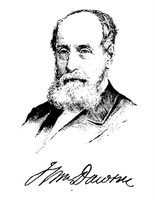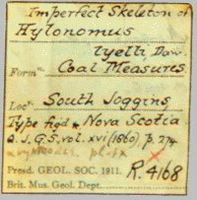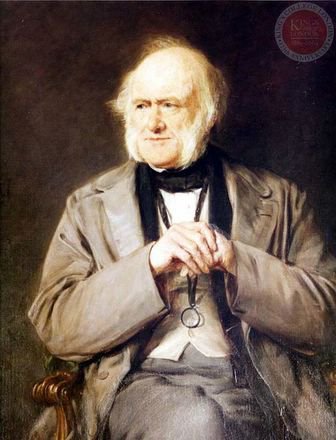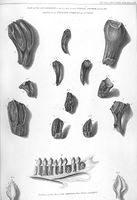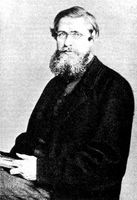Title: Evolution: The Story of Life
Author: Douglas Palmer; with illustrations by Peter Barrett
Publishing Information: University of California Press, HC, 374 pages, November 9, 2009, $39.95
Ordering Numbers: ISBN-10: 0520255119; ISBN-13: 978-0520255111
Review copy: complimentary
From the Publisher: Evolution recreates the 3.5-billion-year story of life on Earth in stunning detail through vivid full-color illustrations and graphics, the latest scientific information, and hundreds of photographs. At the heart of the book is an astonishing, beautifully detailed panorama by renowned illustrator Peter Barrett that, in 100 double-page site reconstructions, offers a freeze-frame view of the communities. These groundbreaking artworks, based on the most recent findings at some of the most famous fossil sites around the world, are paired with an authoritative and highly informative text written for a wide audience of readers.
Review: One of the most frequent questions I get as a palaeontologist is “what did prehistoric locality ‘X’ look like when its fossils were alive?" This book answers that in the 100 double spread reconstructions of 100 famous (or important) fossil localities from around the world. Each panorama provides a synthesize of the environment including important flora and fauna, with concise inserts providing more details on time, place, taxa and other notable facts. The results are truly stunning and will give both the casual fossil enthusiast and jaded professionals new insights into each important evolutionary time slice.
The reconstructions are supplemented by a 45 page examination of the evolutionary ‘tree of life’, a 21 page “Site Gazetteer” with more info and references on the localities depicted in the book, 29 pages of info on the species covered in the book, and finally a fold out that stitches all of the panoramas together.
This prodigious work is recommended, but there is at least one caveat to add. Many of the panoramas average together large regions leading to some factual errors on closer examination, e.g. the
Dinosaurs of “Cretaceous Park” (p. 174-5) implies that it covers the Judith River Formation of Montana and Alberta but it actually just covers the Dinosaur Park Formation of Alberta. There are no
Chasmosaurus specimens known from Montana, and the Judith River Formation of Canada is not known as the Belly River Formation in Canada (there is no Belly River Formation). The only reference for this region (the excellent
Dinosaur Provincial Park edited by Currie and Koppelhus) misspells the second author’s name. And, although many important fossils have been collected from Ukhaa Tolgod in Mongolia, the famous fighting dinosaurs (P. 172) are actually from Togrogiin Shiree. Hopefully these minor problems can be corrected for the 2nd edition.
Recommendation: Recommended
 comparative anatomy with the publication of two landmark volumes (in 1828 and 1837) covering the range of existing knowledge of the prebirth developments of vertebrates.
comparative anatomy with the publication of two landmark volumes (in 1828 and 1837) covering the range of existing knowledge of the prebirth developments of vertebrates. 






